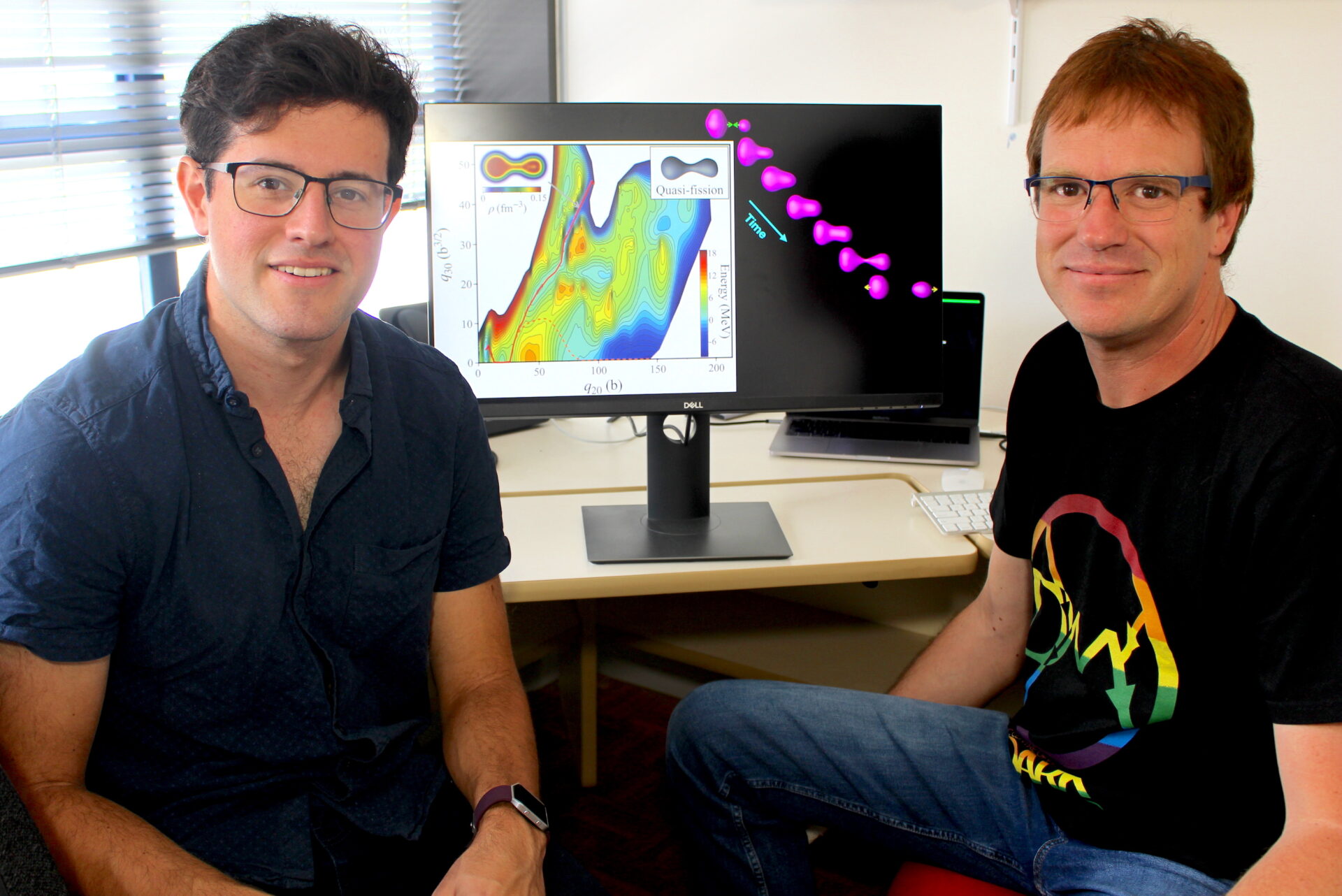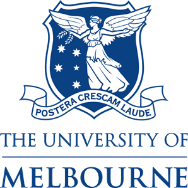Modelling of how nuclei break apart could help us to understand how elements on earth were created – for example when neutron stars collide – and could boost efforts to add new elements to the periodic table.
Professor Cedric Simenel led an international team that found links between two separate processes that are involved in the break-ups of heavy nuclei – one of which has been considered “rubbish”. The link could help scientists understand reactions that happen in extreme environments such as colliding stars – environments that are impossible to create in experiments on earth.
“It opens up a new way to test theoretical predictions of fission – we’re already pushing experiments to the edge,” said Professor Simenel, the Head of the Fundamental and Theoretical Physics Department in the Research School of Physics.
The research group, from ANU Physics and two US universities, Michigan State and Vanderbilt, have linked the more accepted theory of fission – how existing nuclei break apart – with theory describing quasi-fission, a process in which two nuclei collide and stick together for mere zeptoseconds (10-21 s) before flying apart again.
Quasi-fission is especially important in efforts to create super-heavy elements – new members of the periodic table – which is done by slamming together smaller nuclei and looking for the rare, specific conditions in which they do not fly apart immediately.
“Because they exist for such short lifetimes, fission of superheavy elements is extremely hard to study experimentally. Quasi-fission is easy, because it is by far the dominant process, but was for a long time considered as rubbish,” Professor Simenel said.
“Perhaps we can use this huge amount of information from quasi-fission to get information on fission of superheavy elements.”
The team applied their model to a collision between calcium-50 and ytterbium-176, to momentarily produce thorium-226.
“The combination was heavy enough for quasi-fission to be a dominant process, but light enough to be studied experimentally.”
Thorium-226 is a useful nucleus to study because there are two fission modes with equal probability – one that produces a symmetric split, and one that does not. But quasi-fission creates only the asymmetric split, showing how quantum shell effect come into play before the nuclei have a chance to completely even themselves up.
The study of quasi-fission found that during the momentary liaison, the bigger ytterbium nucleus gave some nucleons (protons and neutrons) to the calcium. The longer they stayed connected, the more they evened up their mass – until a specific ratio at which they stopped exchanging.
The fission of an existing thorium nucleus, on the other hand, creates a more even ratio – with the most uneven case being the same ratio to which quasi-fission converges. In other words, the two processes approach the same ratio from different directions – the ratio is an insight into the quantum shell effects at play within the nucleus, said co-author Patrick McGlynn, a PhD student in the Nuclear Physics and Accelerator Applications Department.
“It’s a very interesting boundary, between an apparently classical process like two blobs of matter colliding, and the very quantum process of individual nucleons occupying orbitals that form those blobs,” said Mr McGlynn.
“The reaction of the nucleus to deformation is complicated – there’s plenty of strange quantum behaviour going on that we can’t directly observe.”
Similar reactions will be studied experimentally at the ANU Heavy-Ion Accelerator Facility to test the predicted similarities between fission and quasi-fission modes.
This kind of insight could help scientists understand the fission properties of larger nuclei, which are harder to create, Professor Simenel said.
“Hopefully in the future we will be able to use quasi-fission measurements to get part of the information on the fission channel of superheavy nucleus, which we can’t study easily with current experimental facilities.”
However, Professor Simenel pointed out that their calculations do not give a complete picture of superheavy element behaviour.
“You will have access to only some of the modes, but nevertheless, if you find the mode in quasi-fission, it’s an indication it could be a mode in fission.”
The time for the exchange of nucleons in the team’s study is preposterously short – less than 15 zeptoseconds. But the processing time to run the calculations – using the National Computation Infrastructure supercomputer Gadi – was enormous: over a year elapsed, totalling 14000 CPU hours.
An improved understanding on fission processes would have major ramifications for creation of heavy elements such as gold and lead. Such huge elements are formed when neutron stars collide, an environment in which nuclei are bombarded with neutrons and grow in a pattern known as the R-process.
During the R-process the nuclei accumulate neutrons until they become unstable and break apart – fission – into two smaller parts. These in turn both accumulate more neutrons and repeat the cycle.
Professor Simenel said this new modelling technique could help understand how fission affects the R-process that creates the heaviest elements we find on earth.
“The heaviest nuclei in the R-process are way too neutron rich to be studied experimentally, it’s just impossible. But this opens a lot of possibilities to better test the theory with experiments, and extrapolate to the heavier and more neutron-rich nuclei.”
Comparison of fission and quasi-fission modes, by C. Simenel, P. McGlynn, A. S. Umar and K. Godbey was published in Physics Letters B in November 2021.



